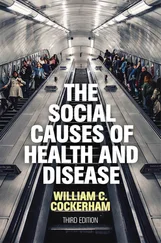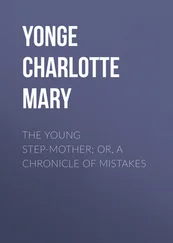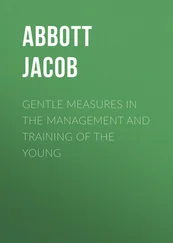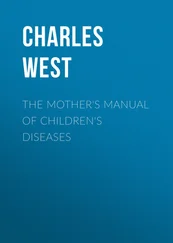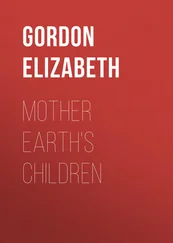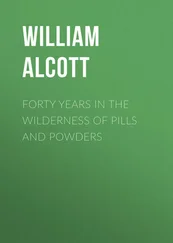William Alcott - The Young Mother - Management of Children in Regard to Health
Здесь есть возможность читать онлайн «William Alcott - The Young Mother - Management of Children in Regard to Health» — ознакомительный отрывок электронной книги совершенно бесплатно, а после прочтения отрывка купить полную версию. В некоторых случаях можно слушать аудио, скачать через торрент в формате fb2 и присутствует краткое содержание. Жанр: popular_business, upbringing_book, foreign_edu, на английском языке. Описание произведения, (предисловие) а так же отзывы посетителей доступны на портале библиотеки ЛибКат.
- Название:The Young Mother: Management of Children in Regard to Health
- Автор:
- Жанр:
- Год:неизвестен
- ISBN:нет данных
- Рейтинг книги:4 / 5. Голосов: 1
-
Избранное:Добавить в избранное
- Отзывы:
-
Ваша оценка:
- 80
- 1
- 2
- 3
- 4
- 5
The Young Mother: Management of Children in Regard to Health: краткое содержание, описание и аннотация
Предлагаем к чтению аннотацию, описание, краткое содержание или предисловие (зависит от того, что написал сам автор книги «The Young Mother: Management of Children in Regard to Health»). Если вы не нашли необходимую информацию о книге — напишите в комментариях, мы постараемся отыскать её.
The Young Mother: Management of Children in Regard to Health — читать онлайн ознакомительный отрывок
Ниже представлен текст книги, разбитый по страницам. Система сохранения места последней прочитанной страницы, позволяет с удобством читать онлайн бесплатно книгу «The Young Mother: Management of Children in Regard to Health», без необходимости каждый раз заново искать на чём Вы остановились. Поставьте закладку, и сможете в любой момент перейти на страницу, на которой закончили чтение.
Интервал:
Закладка:
If mothers ask, of what use this motion of the lungs is, it is only necessary to refer them to the chapter on Ventilation, in which I trust the subject is made intelligible, and a satisfactory answer afforded.
But I might appeal to facts. Let us look at females around us generally. Do their countenances indicate that they enjoy as good health as they did when dress was worn more loosely? Have they not oftener a leaden hue, as if the blood in them was darker? Are they not oftener short-breathed than formerly? As they advance in life, have they not more chronic diseases? Are not their chests smaller and weaker? And as the doctrine that if one member suffers, all the other members suffer with it, is not less true in physiology than in morals, do we not find other organs besides the lungs weakened? Surgeons and physicians, who, like faithful sentinels, have watched at their post half a century, tell us, moreover, that if these foolish and injurious practices to which I refer are tolerated two centuries longer, every female will be deformed, and the whole race greatly degenerated, physically and morally.
Those with whom no arguments will avail, are recommended to read the following remarks from the first volume of the Library of Health, p. 119:
"It is related, on the authority of Macgill, that in Tunis, after a girl is engaged, or betrothed, she is then fattened . For this purpose, she is cooped up in a small room, and shackles of gold and silver are placed upon her ancles and wrists, as a piece of dress. If she is to be married to a man who has discharged, despatched, or lost a former wife, the shackles which the former wife wore are put on the new bride's limbs, and she is fed till they are filled up to a proper thickness. The food used for this custom worthy of the barbarians is called drough , which is of an extraordinary fattening quality, and also famous for rendering the milk of the nurse rich and abundant. With this and their national dish, cuscasoo , the bride is literally crammed, and many actually die under the spoon."
We laugh at all this, and well we may; but there are customs not very far from home, no less ridiculous.
"There is a country four or five thousand miles westward of Tunis, where the females, to a very great extent, are emaciated for marriage, instead being fattened. This process is begun, in part, by shackles—not of gold and silver, perhaps, but of wood—but instead of being put on loosely, and causing the body or limbs to fill them, they are made to compress the body in the outset; and as the size of the latter diminishes, the shackles are contracted or tightened. As with the eastern, so with the western females, many of them die under the process; though a far greater number die at a remote period, as the consequence of it."
I have already committed myself to the reader as favoring the use of soft flannel in cold weather, especially for children who are not yet able to run about freely in the open air. The advantages of an early use of this material, at least for under-clothes, are numerous. The following are a few of them.
1. Flannel, next to the skin, is a pleasant flesh brush; keeping up a gentle and equable irritation, and promoting perspiration and every other function which it is the office of the skin to perform, or assist in performing.
2. It guards the body against the cooling effects of evaporation, when in a state of profuse perspiration.
3. By preventing the heat of the body from escaping too rapidly, it keeps up a steadier temperature on the surface than any other known substance. The importance of the last consideration is greater, in a climate like our own, than elsewhere.
But there are limits to the use of this article of clothing. Whenever the temperature of the atmosphere is so great, even without artificial heat, that we no longer wish to retain the heat of the body by the clothing, then all flannel should be removed at once, and linen should be substituted; taking care to replace the flannel whenever the temperature of the atmosphere, as indicated by the thermometer, or by the child's feelings, may seem to require it.
It should also be kept clean. There is a very general mistake abroad on this subject. Many suppose that flannel can be worn longer without washing than other kinds of cloth. On the contrary, it should be changed oftener than cotton, or even linen, because it will absorb a great deal of fluid, especially the matter of perspiration, which, if long retained, is believed to ferment, and produce unhealthy, if not poisonous gases. For this reason, too, flannel for children's clothing should be white, that it may show dirt the more readily, and obtain the more frequent washing; although it is for this very reason—its liability to exhibit the least particles of dirt—that it is commonly rejected.
One caution more in regard to the use of flannel may be necessary. With some children, owing to a peculiarity of constitution, flannel will produce eruptions on the skin, which are very troublesome. Whenever this is the case, the flannel should be immediately laid aside; upon which the eruptions usually disappear.
If parents would take proper pains to get the lighter, softer kinds of flannel for this purpose, and be particular about its looseness and quantity, I should prefer, as I have already intimated, to have very young children, in our climate, wear this material the greater part of the year, excepting perhaps July and August.
My reasons for this course would be, first, that I like the stimulus of soft flannel on the skin, if changed sufficiently often, better than that of any other kind of clothing. Secondly, cotton is so liable to take fire, that its use in the nursery and among little children seems very hazardous. Thirdly, silk is not quite the appropriate material, as a general thing, besides being too expensive; and fourthly, linen is not warm enough, except in mid-summer.
Except, therefore, in July and August, and in cases of idiosyncracy, such as have just been alluded to, I would use flannel for the under-clothes of young children, throughout the year. But whenever they acquire sufficient strength to walk and run, and play much in the open air, I would gradually lay aside the use of all flannel, even in winter. Great attention, however, must be paid to the quantity . The parent who, guided by this rule, should keep on her child the same amount of flannel, and of the same thickness, from January to June 30th, and then, on the first of July, should suddenly exchange it for thin linen, in moderate quantity, might find trouble from it. It is better to make the changes more gradually; otherwise, whatever may be the material of the dress, the child will be likely to suffer.
The quantity of clothing used by different individuals of the same age, in the same climate, possessing constitutions nearly alike, and following similar occupations, is so different as to strike us with surprise when we first observe the fact.
One will wear nothing but a coarse linen or cotton shirt, coarse coat, waistcoat, and pantaloons, and boots, in the coldest weather. He never, unless it be on the Sabbath, puts on even a cravat, and never in any case stockings or mittens.
Another, in similar circumstances in all respects, constantly wears his thick stockings, flannel wrapper and drawers, and cravat; and seldom goes out, in cold weather, without mittens and an overcoat. He is not a whit warmer: indeed he often suffers more from the cold, than his neighbor who dresses in the manner just described.
Why all this difference? It is no doubt the result of habit. Any individual may accustom himself to much or little clothing. And the earlier the habit is begun, the greater is its influence.
Читать дальшеИнтервал:
Закладка:
Похожие книги на «The Young Mother: Management of Children in Regard to Health»
Представляем Вашему вниманию похожие книги на «The Young Mother: Management of Children in Regard to Health» списком для выбора. Мы отобрали схожую по названию и смыслу литературу в надежде предоставить читателям больше вариантов отыскать новые, интересные, ещё непрочитанные произведения.
Обсуждение, отзывы о книге «The Young Mother: Management of Children in Regard to Health» и просто собственные мнения читателей. Оставьте ваши комментарии, напишите, что Вы думаете о произведении, его смысле или главных героях. Укажите что конкретно понравилось, а что нет, и почему Вы так считаете.



